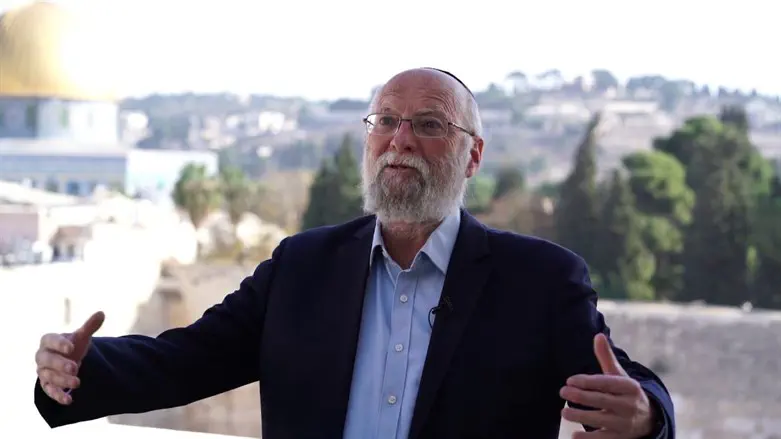
Along the millennia of our nation, beginning with Avraham to this day, the Jewish people have been confronted with many challenging, even existential, dilemmas when the wrong choice led to death. I have chosen four to demonstrate, with the first just theoretical.
1 - Early on when Israel became an independent state, after 2000 years of groveling in the galu’yot (plural of galut) of Esau and Yishmael, in our yeshiva we would play a make- believe game that made us all nervous. It was centered around one question: if Israel and the US went to war against each other, on whose side would you be?
The ubiquitous (usual) replies were “Israel with the US, it could never happen”.
2- This was make-believe. But 3300 years ago in Egypt, the parasha through the commentators, relates that the nation faced a soul searching “to be or not to be” dilemma which ended in the death of 80% of the Jewish male population during the plague of darkness.
Moshe put forth his strategic “itinerary” of freedom. The Jews would escape the work-death camps of Egypt and with no time to prepare food and water, they would immediately enter the formidable, intimidating Sinai desert for an unknown period of time. They would make their way to the land of Canaan, employ ethnic cleansing on the descendants of Canaan, and then change all the road signs to Hebrew and resettle the land with the twelve tribes.
It would not sit well in terms of today’s elevated “moral” standards, but Moshe was fulfilling the will of Hashem - the source of right and wrong, and what is moral and what is not.
Twenty percent of the nation (from whom we descend) agreed and followed Moshe to become Hashem’s chosen people to this day, however, 80% could not see themselves in this scenario. How can millions of Jews survive in a barren, ominous desert where rational men fear to tread? That 80% died during the plague of darkness, leaving no trace of their existence.
3- Skipping centuries, lets return to the end of the 19th century at the beginning of political Zionism and up to the 1930s when the Germans unleashed their genie of hate.
Binyamin Ze’ev Hertzl opened up the dream of leaving behind the cesspools of Christian European anti-Semitism to return to Eretz Yisrael not only as downtrodden individuals but as a free nation. It was a challenge for the religious segment. Many leading rabbis said that Palestine is led by secular Jews who are dedicated to create a society where Hashem and Torah will not exist, so however difficult, it is preferable to remain in Europe. This was a dilemma for every Jew. There were those who did come on aliya, but the big numbers remained and paid the ultimate price in the German death camps.
4 – Today there is a background question that no one wants to bring to the surface. It dwells in the consciousness of every responsible leader - religious or not.
Can a country of 7 million Jews survive when surrounded by nearly half a billion Arabs; most of whom pray to their god of vengeance for the destruction of the Jewish state, to be followed by the annihilation of world Jewry.
The combined population of the 22 member states of the Arab League, which includes countries in the Middle East and North Africa, as of 2023, is approximately 473 million. Plus, another 2 million in Israel itself, bringing the total to 475 million.
According to the Israel Central Bureau of Statistics, as of December 2023 the Jews in Israel number approximately 7,208,000. Equaling one Jew for every 65 Arabs or 100 Jews for every 6524 Arabs living in the Middle East and North Africa. This statistic is behind many of the world’s nations that back the Arabs in the UN, despite the disparity in all phases of life where Israel is king.
Is it possible that this military imbalance that favors our enemies stands behind the choice of many religious leaders to build their lives in the galut at the expense of denying the overriding mitzvah of living in the holy land?
It would explain why the galut religious leaders of the last century, both hassidic and misnaged, did not call out “let us all ascend to Zion”.
And could this be the real camouflaged reason for the hareidi segment in Israel not to serve in the army, because their leaders believe that we are still in galut?
In a 2022 survey, 45% of Israeli Jews self-identified as "secular"; 10% hareidi; 33% masorti and 12% dati ('religious' or 'orthodox', including religious Zionists). Bringing the hareidi and religious Zionist total to 22% and the others to 78%. These numbers parallel the demographics of our ancestors on the eve of the exodus!
One thing is clear. The religious Zionists will cling to the belief that we are now in the era of redemption; and no matter how bleak the situation they will not budge. This was clear in the three weeks prior to the Six Day War when in my hareidi neighborhood of Kiryat Sanz so many left the country while the religious Zionists stayed.
Religious Zionists are always the first to run to the war front and the last to turn their backs.
Rabbi Nachman Kahana is a Torah scholar, author, teacher and lecturer, Founder and Director of the Center for Kohanim, Co-founder of the Temple Institute, Co-founder of Atara Leyoshna – Ateret Kohanim, was rabbi of Chazon Yechezkel Synagogue – Young Israel of the Old City of Jerusalem for 32 years, and is the author of the 15-volume “Mei Menuchot” series on Tosefot, and 3-volume “With All Your Might: The Torah of Eretz Yisrael in the Weekly Parashah” (2009-2011), and “Reflections from Yerushalayim: Thoughts on the Torah, the Land and the Nation of Israel” (2019) as well as weekly parasha commentary available where he blogs at https://NachmanKahana.com